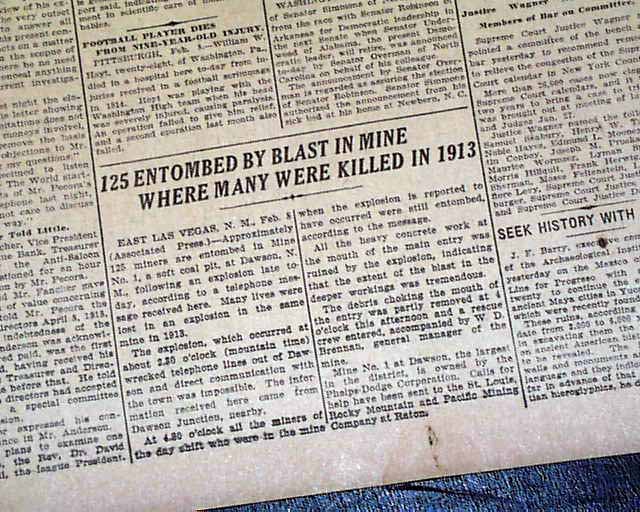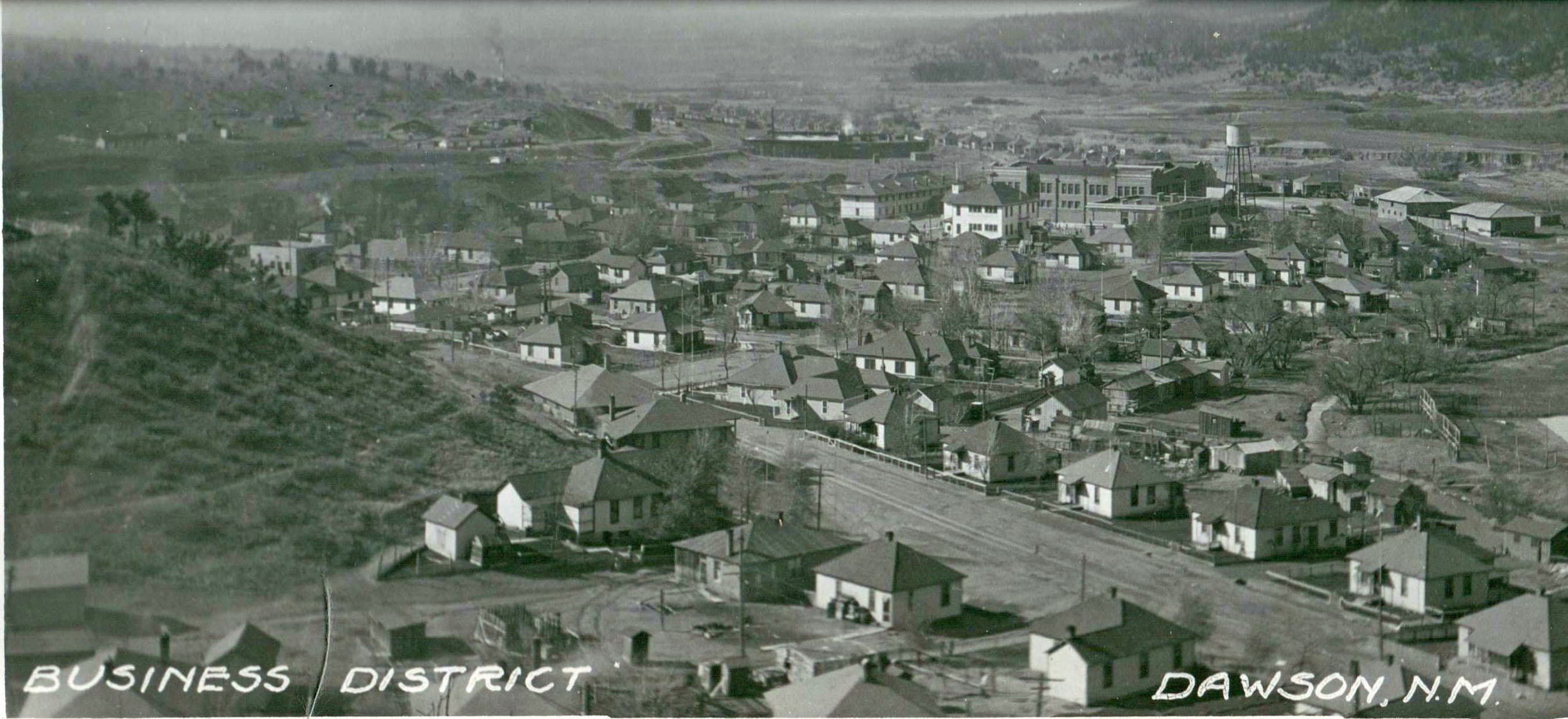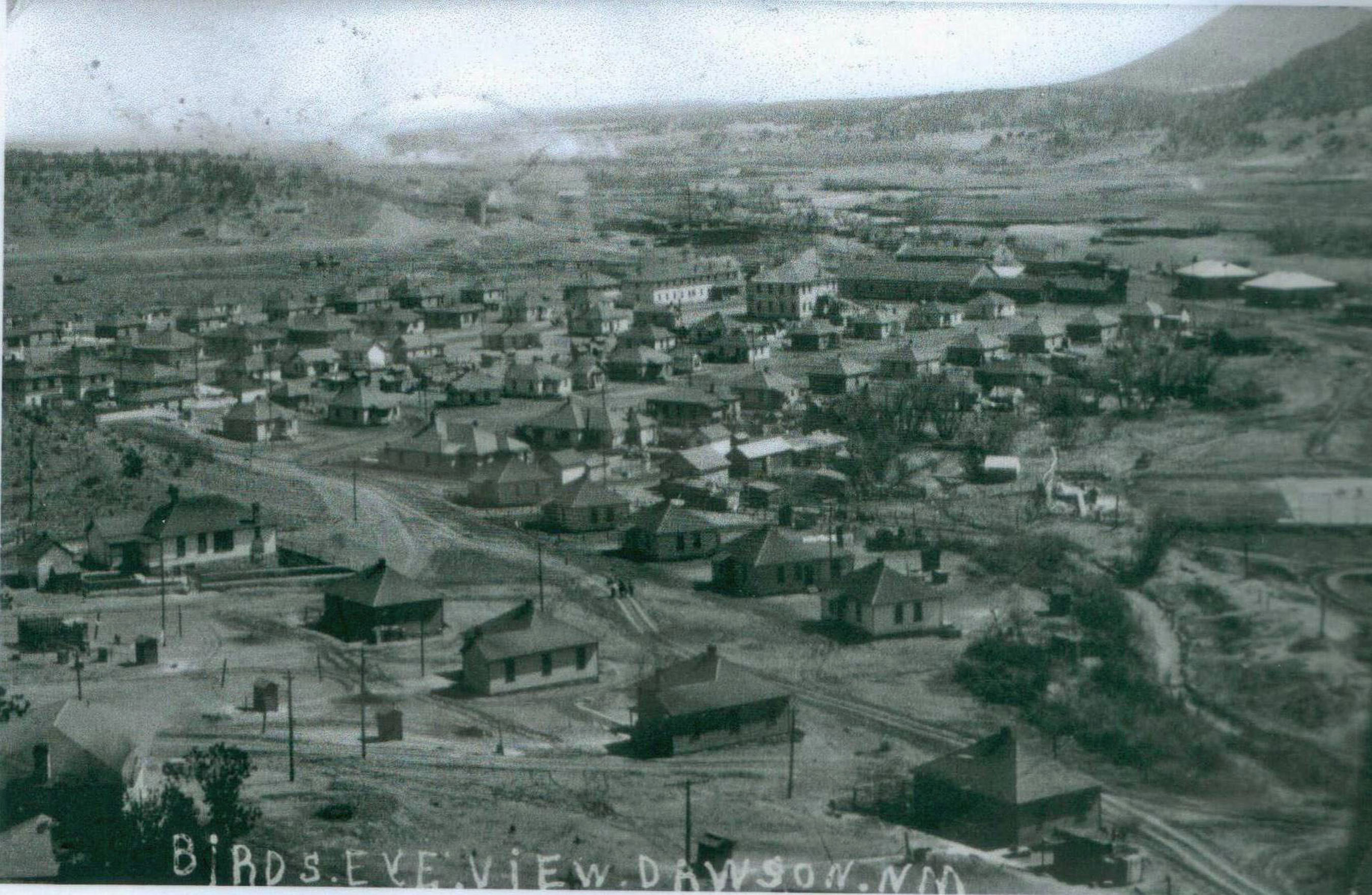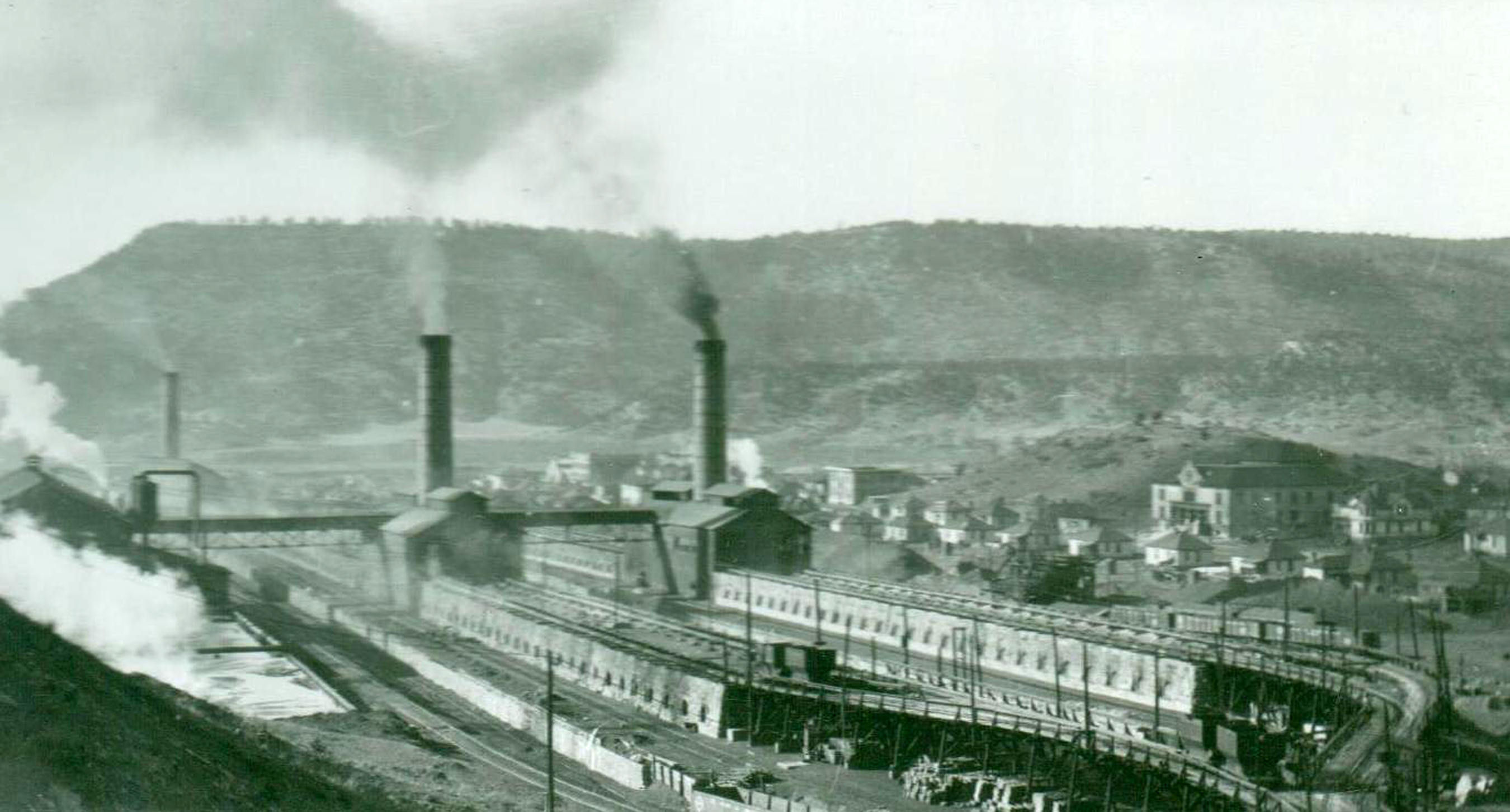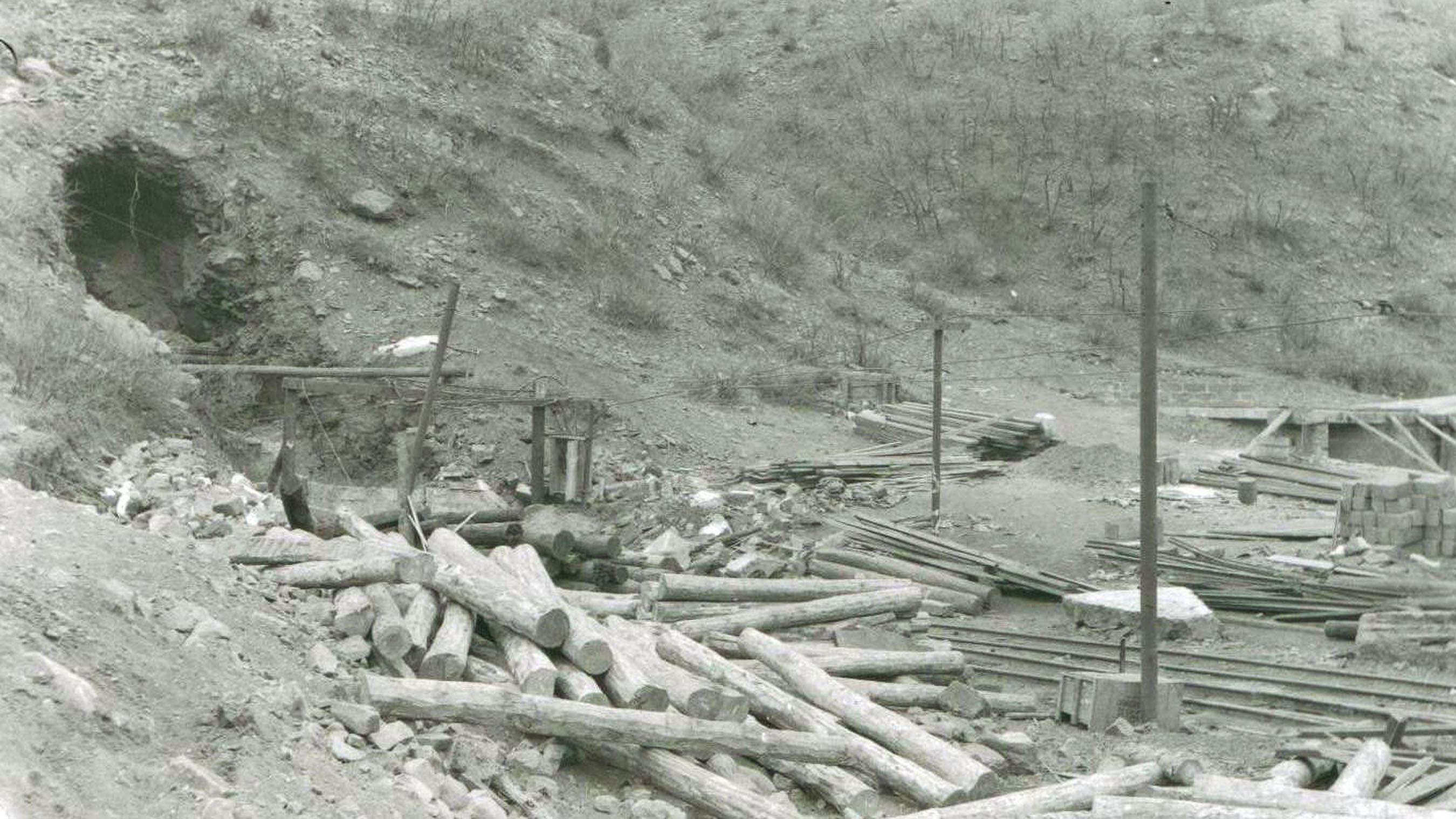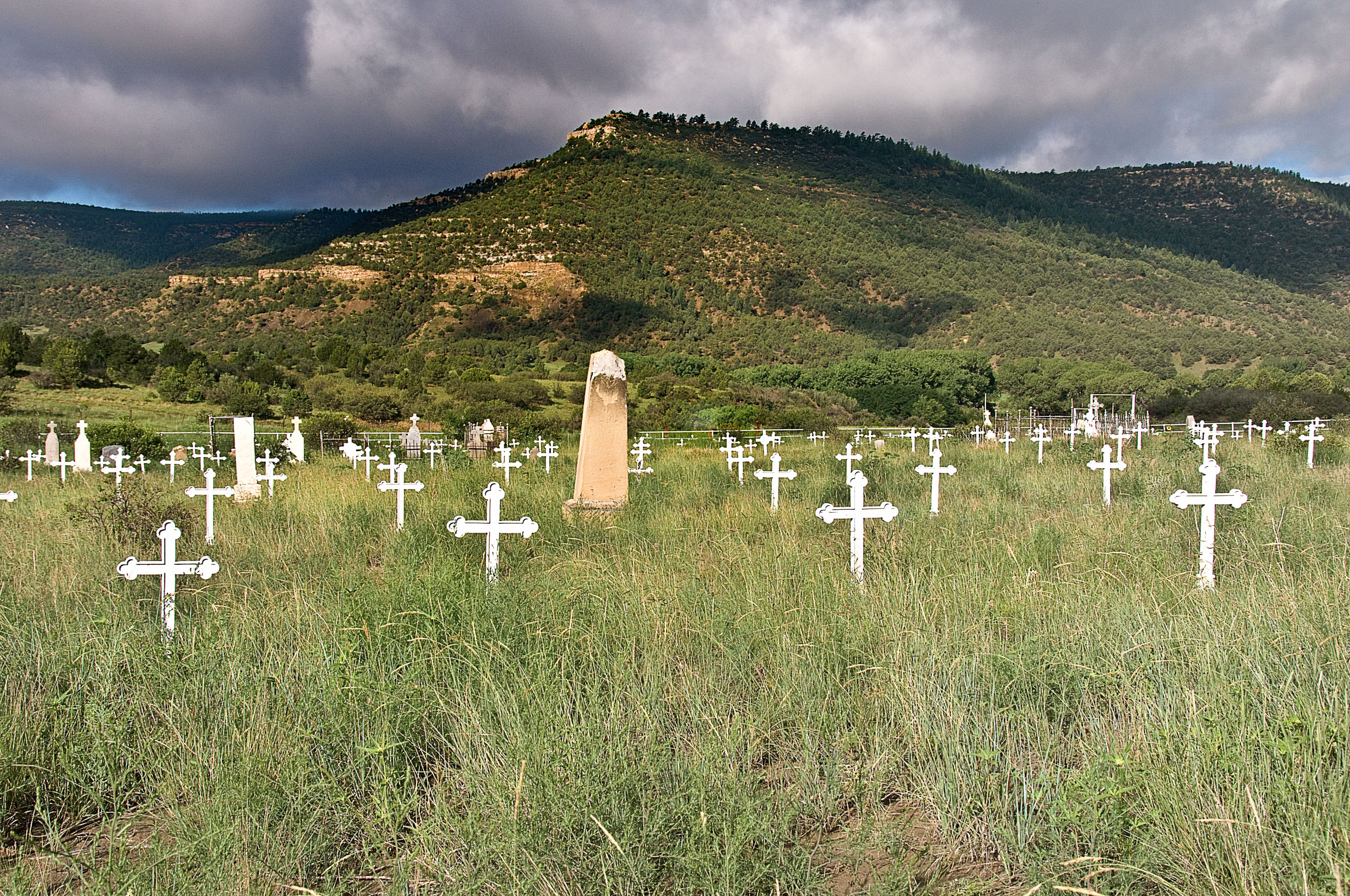The Dawson Memorial
An AHEPA project honoring the miners of Dawson, New Mexico who died in 1913 and 1923.
AHEPA District 21, encompassing Northern California and Northern Nevada, has adopted as a District project,
memorial services to be held by each chapter on October 20, 2013. This date is two days before the 100-year
anniversary of the 1913 disaster. These memorials will be held in the parish church of each chapter, according to
the practices of the Greek Orthodox Church. While we have in mind those of Greek descent who perished in 1913 and 1923
this memorial service will honor all those who died in Dawson.
Recommended to the National AHEPA by the conference of District Governors, by District 21, and by the sponsoring chapter,
Fresno AHEPA #151, this project was adopted as a National Project at the 91st Supreme Convention in Orlando FL.
It is expected that chapters throughout the United States will join District 21 in honoring the memory of those miners
who now lie nearly forgotten in the lonely, windswept cemetery at Dawson, New Mexico.
Send inquiries and information requests to Robert Sexton PSG, PDG rdsexton57@gmail.com
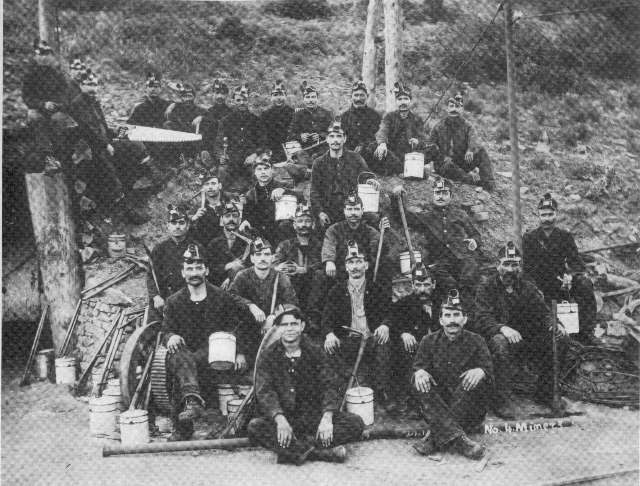
The Dawson coal mine was a complex of several mines about thirty miles west of Raton, New Mexico. Mining began there prior to 1900 by one J. B. Dawson who had purchased 3,700 acres of land that encompassed a major coal deposit. A small town soon sprang up, and in 1905, the Phelps Dodge Corporation bought the mine to provide fuel for its copper mining operations. The mines would produce more than 33,000,000 tons of coal before shutting down in April, 1950. The miners, who worked Dawson as well as mines throughout the west, were a diverse lot. Prominent among them were many Italians and Greeks. By 1913, the town numbered some 6,000 residents, among them my grandfather and grandmother, newly married that same year.
Phelps Dodge was a safety minded company but the dangers of coal dust were not recognized at the time. On October 22, 1913 at 3:10 PM, an enormous explosion occurred in mine number 2. It was ultimately determined that a dynamite charge had ignited coal dust in the mine and 263 miners died in the resulting blast. There were twenty-three survivors, including one George Mavroidis, who escaped a blast of gas and was taken out unconscious. Of the dead, 130 were Italians with the Greeks being the next largest group. Phelps Dodge paid all funeral expenses and gave each widow $1000 and child of a dead miner $200. Once the cause of the disaster was understood, the company implemented many safety practices to try to prevent further accidents. The 1913 accident had occurred because a miner set off a dynamite charge against company rules. The miner, who died with the others, was never identified. Even with stricter measures, a problem with the dust suppression system led to yet another major explosion on February 8, 1923. In this accident, another 120 miners died. Of the only two survivors, one was Charles Skandale (Skandalis) from Crete and the other, an Italian named Felini Martini.
There is much more that can be told about Dawson. Somehow, it was dear to the people who lived there even though it was a company town. Loyalty to the town continues to this day, though the town was literally demolished after the mines closed in 1950. The Dawson Cemetery is accessible and is listed as a national historic site. The town site itself is on private land and is normally closed to public access. However, a Dawson Reunion organization exists and every two years, the ranch company that owns the land allows them access to the site. Some 200-300 people come for each reunion, those who lived and worked there, and their descendants.
The Greeks who lived and worked there have now scattered widely, mostly throughout the west. There is a family here in Fresno who were there at the time of the 1923 accident. I have met the granddaughter of Charles Skandale and know people who knew him.
The Dawson Memorial Photos
A view of Dawson in the early 1900's.
Dawson's downtown district.
The Phelps-Dodge Mercantile store is on the left.
The hotel is on the right.
Dawson sported schools, churches, a hospital, gymnasium
swimming pool and an opera house.
The interior of the mercantile store.
The size of the store demostrates how complete
it needed to be to serve the entire town.
Another view of Dawson.
The only thing the town lacked
was paved streets.
The coke ovens at Dawson.
High coking was one of the advantages
of Dawson coal.It was why Phelps-Dodge
bought the mines to support their copper smelters.
A group of miners of the early 1900's.
It is easy to recognize the diversity of the workforce.
The entrance to mine #1 after the 1923 explosion.
The size of the crater is evidence of the force of the explosion.
Miners with the last coal car in 1950.
Before the mines closed, 33,000,000 tons of coal
were produced.
It is said a 50-year supply
still remains.
Historical marker at the Dawson cemetery.
A view of the cemetery today. The white iron crosses
were supplied by Phelps-Dodge.
The iron crosses must have been ordered
specifically for each miners name.
The cover of the definitive book on Dawson.
The author, Toby Smith, was able to interview
many of the Dawson residents.
The book is now highly collectible
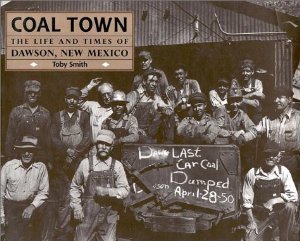
Back
AHEPA District 21, encompassing Northern California and Northern Nevada, has adopted as a District project,
memorial services to be held by each chapter on October 20, 2013. This date is two days before the 100-year
anniversary of the 1913 disaster. These memorials will be held in the parish church of each chapter, according to
the practices of the Greek Orthodox Church. While we have in mind those of Greek descent who perished in 1913 and 1923
this memorial service will honor all those who died in Dawson.
Recommended to the National AHEPA by the conference of District Governors, by District 21, and by the sponsoring chapter,
Fresno AHEPA #151, this project was adopted as a National Project at the 91st Supreme Convention in Orlando FL.
It is expected that chapters throughout the United States will join District 21 in honoring the memory of those miners
who now lie nearly forgotten in the lonely, windswept cemetery at Dawson, New Mexico.
Send inquiries and information requests to Robert Sexton SG, PDG rdsexton57@gmail.com
